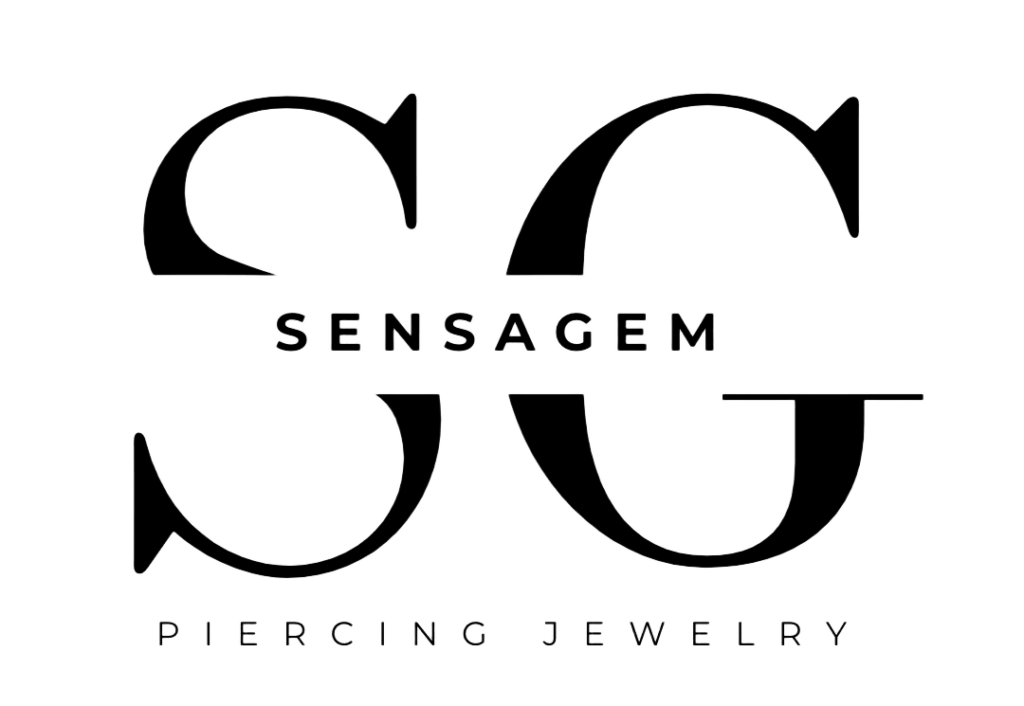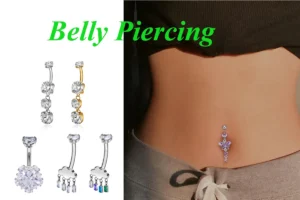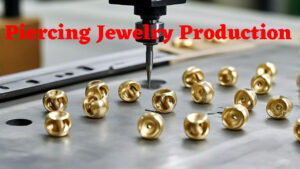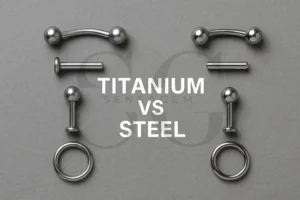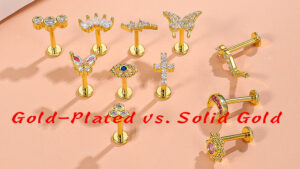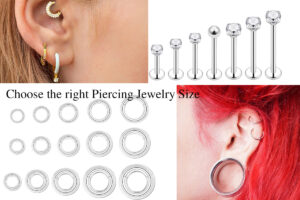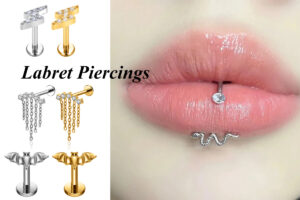Introduzione
Choosing the right material for piercing jewelry isn’t just about appearance—it directly impacts healing, comfort, and safety. Two popular materials in the industry are 316 and 316L surgical stainless steel. Both offer excellent corrosion resistance and durability, but 316L has gained a reputation as the superior option for most piercing types. In questa guida, we explore the key differences between these materials and why 316L is often the preferred choice for both fresh and healed piercings.
👉 correlato: Certificazione per piercing per gioielli - Comprensione dell'acciaio inossidabile & Materiali in titanio
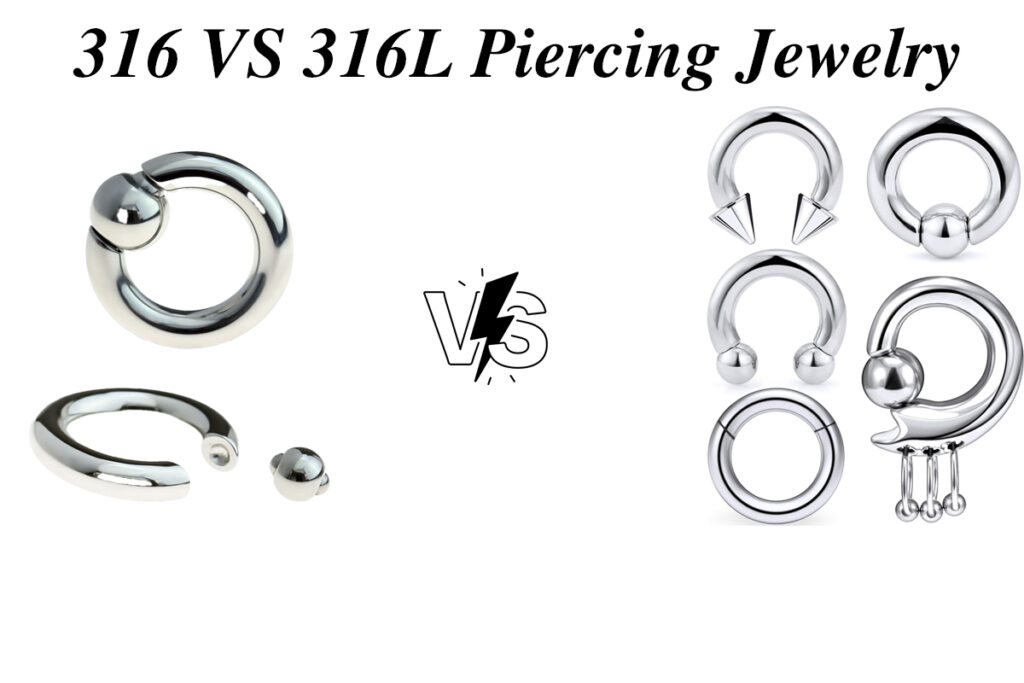
What Is 316 Acciaio chirurgico?
316 surgical steel is a chromium-nickel-molybdenum alloy prized for its:
High resistance to corrosion (especially in moist or salty environments)
Strong structural durability
Medical-grade applications (implants, surgical tools)
Tuttavia, it contains a higher carbon content than 316L, making it slightly less biocompatible for sensitive skin.
What Makes 316L Surgical Steel Different?
316L is the low-carbon variant of 316. The “L” stands for “low carbon,” which results in:
Greater biocompatibilità (reduced risk of skin irritation)
Improved resistance to corrosion
A smoother, more polished finish—ideal for healing piercings
👉 Bonus: Guida alla sicurezza per i migliori materiali per il piercing
Benefits of 316L Surgical Steel in Piercing Jewelry
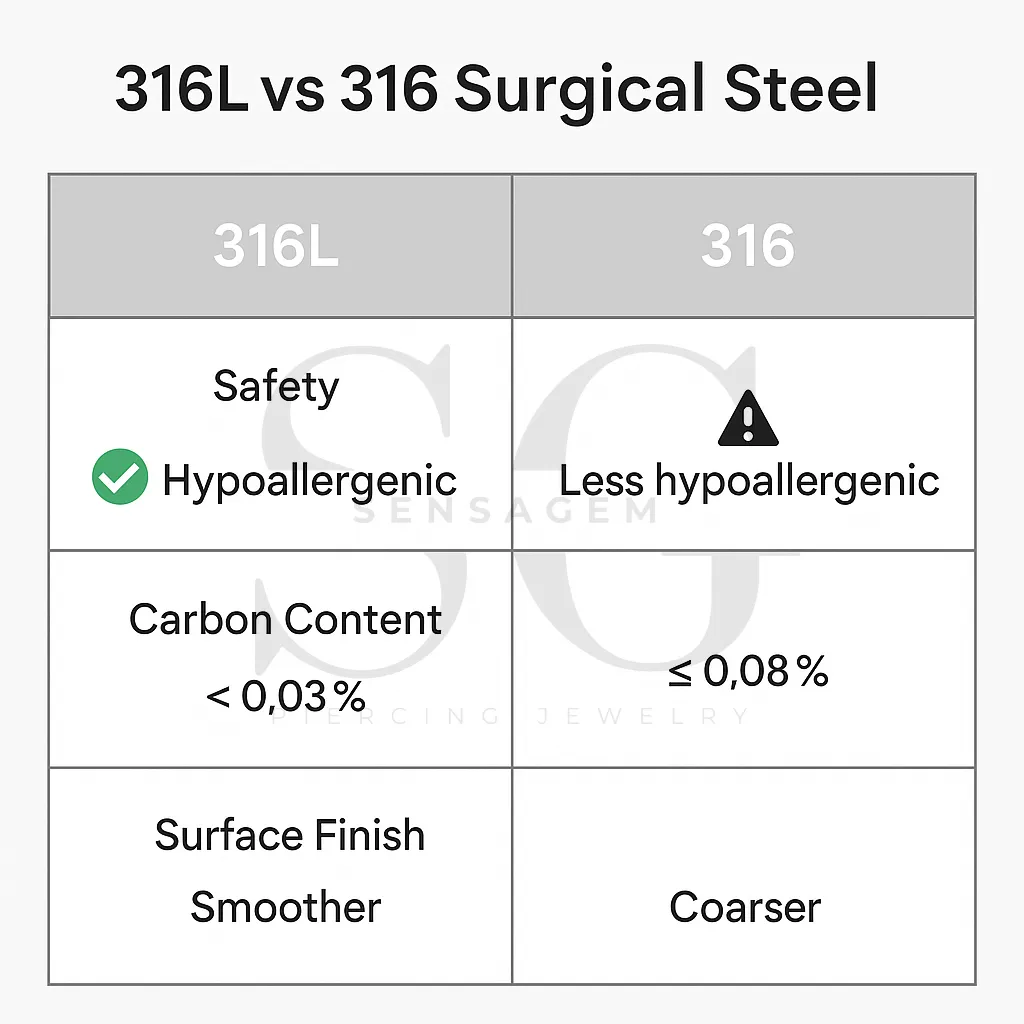
1. Superior Corrosion Resistance
Excellent for wet environments (sweat, seawater, body fluids)
Reduces oxidation, tarnishing, and metal degradation
2. Hypoallergenic Qualities
Lower nickel content than standard stainless steel
Reduces allergic reactions and redness
Ideal for sensitive skin and first-time piercings
3. Strength and Durability
Withstands daily wear, pressure, and physical impact
Long-lasting shine and finish with minimal maintenance
4. Ideal for Healing Piercings
Smooth polish reduces irritation
Non-reactive, helping tissue heal faster
Trusted by piercers for labret, naso, capezzolo, and navel piercings
5. Easy to Clean and Maintain
Does not tarnish or rust
Cleans with mild soap and warm water
Keeps shine without frequent polishing
Recommended Piercing Types for 316L
316L surgical steel is suitable for:
🟢 Ear piercings: lobes, cartilagine, elica
🟢 Facial piercings: borchie, lip rings, eyebrow jewelry
🟢 Body piercings: capezzolo, navel, surface
👉 Vedi anche: How to Heal and Care for Your Navel Piercing
316L vs 316 Acciaio chirurgico: Confronto rapido
| Feature | 316L Acciaio chirurgico | 316 Acciaio chirurgico |
|---|---|---|
| Carbon Content | Lower | Higher |
| Biocompatibility | ✅ Eccellente | ⚠️ Moderato |
| Resistenza alla corrosione | ✅ Enhanced | ✅ alto |
| Ipoallergenico | ✅ Sì | ⚠️ May irritate |
| Surface Finish | Smoother | Slightly rougher |
| Best Use | Fresh & sensitive piercings | Piercing guariti |
For sensitive clients or new piercings, 316L is the clear winner.
👉 Learn more in our Ultimate Guide to Wholesale Titanium & Stainless Steel Piercing Jewelry
Certification and Material Verification
Not all “surgical steel” is created equal. To ensure safety:
Look for material markings (316L, ASTM F138)
Ask for Mill Test Certificates (MTC) or material specs
Avoid mystery metals or generic alloys without traceability
👉 correlato: ASTM F136 Titanium and 316L Stainless Steel – The Best Materials
Questo rileva, all 316L products are made from certified surgical-grade steel and available with documentation upon request.
Is 316L safe for new piercings?
SÌ, 316L is hypoallergenic, resistente alla corrosione, and has a smooth finish, making it ideal for healing piercings.
What’s the difference between 316 and 316L?
316L has lower carbon content than 316, improving its biocompatibility and reducing skin irritation risks. It also has a smoother surface.
Can I use 316L jewelry for people with nickel allergies?
316L contains a minimal amount of nickel and is generally safe for those with mild sensitivities. For severe allergies, titanium may be a better option.
How do I know if my jewelry is real 316L surgical steel?
Ask the supplier for a Mill Test Certificate (MTC) or ASTM F138 specification. Avoid generic terms like “surgical steel” without documentation.
Conclusione
316 and 316L surgical steels are both excellent choices for body jewelry. Tuttavia, 316L offers superior safety and comfort for healing and sensitive piercings thanks to its lower carbon content, smooth surface, and enhanced hypoallergenic performance.
If you’re a professional piercer, Proprietario dello studio, or B2B buyer, choosing certified 316L jewelry helps ensure better healing, fewer complications, and more satisfied clients.
👉 Explore Sensagem’s 316L stainless steel collection or request a sample today.
